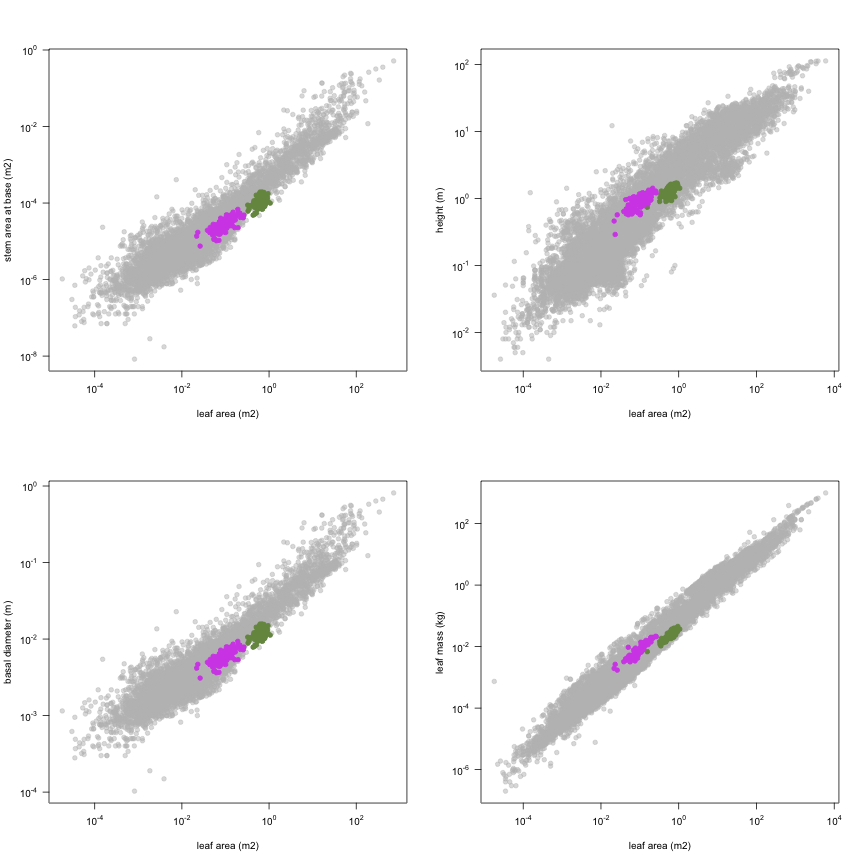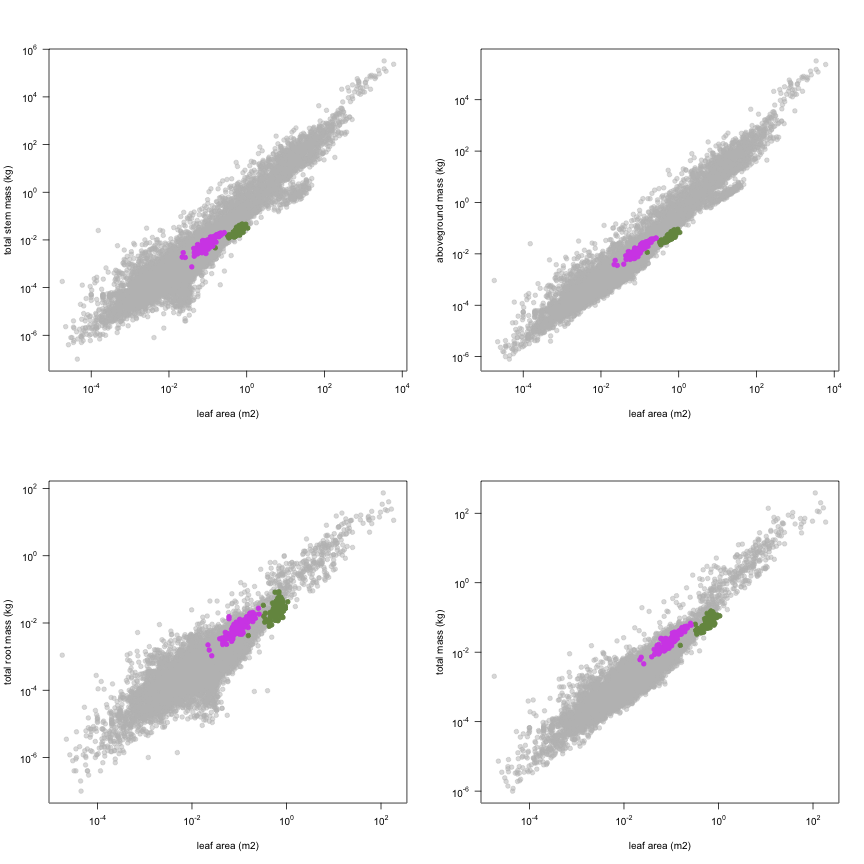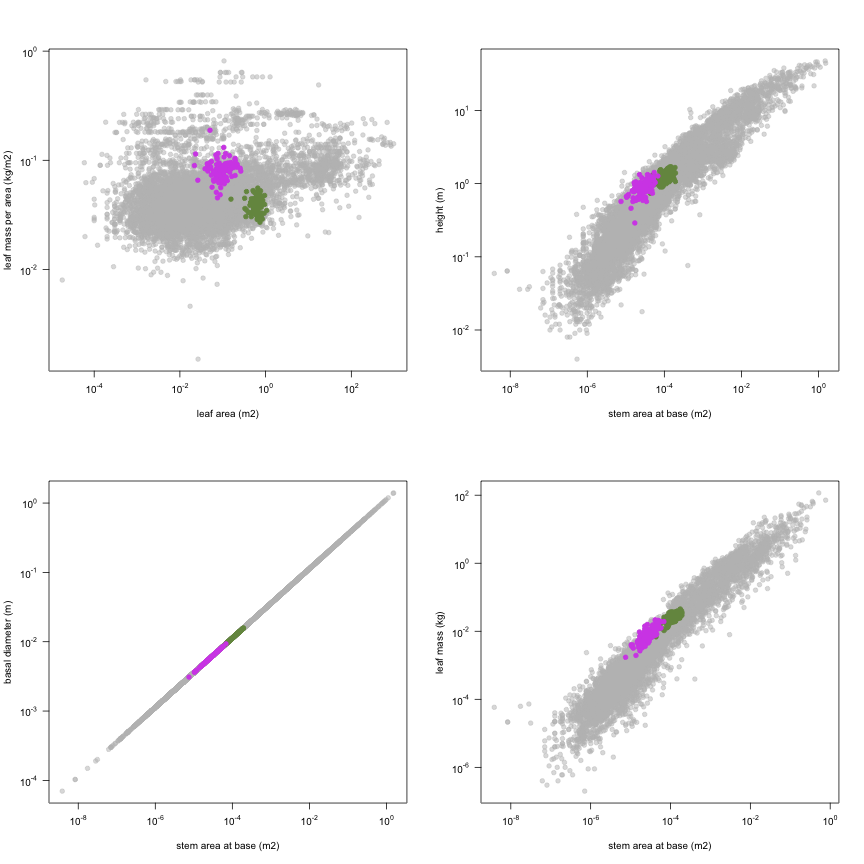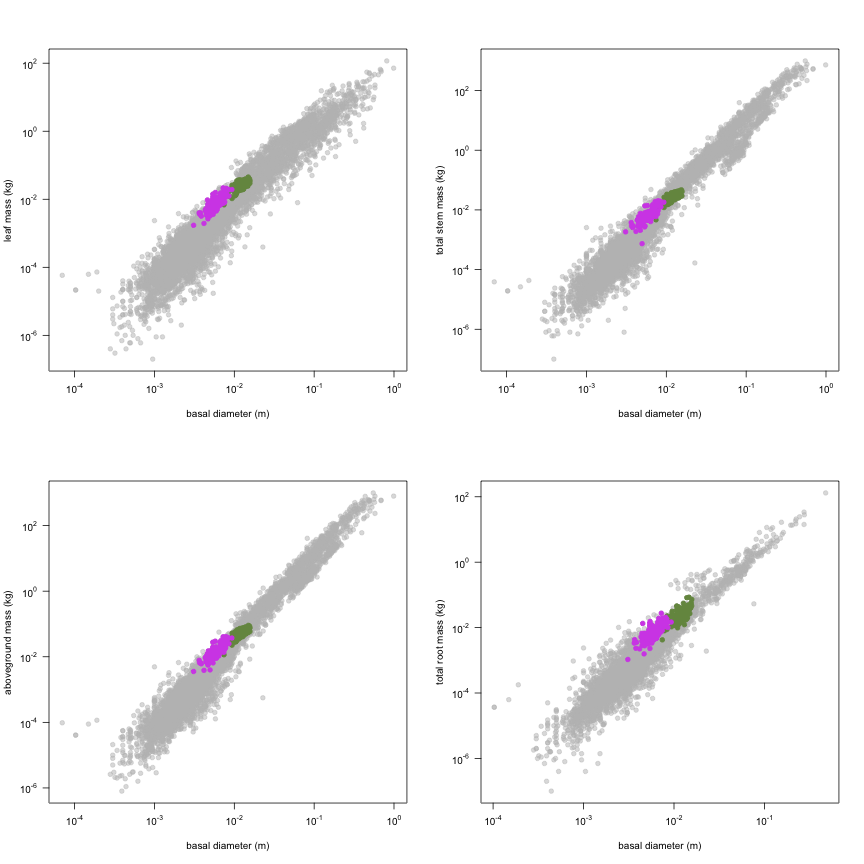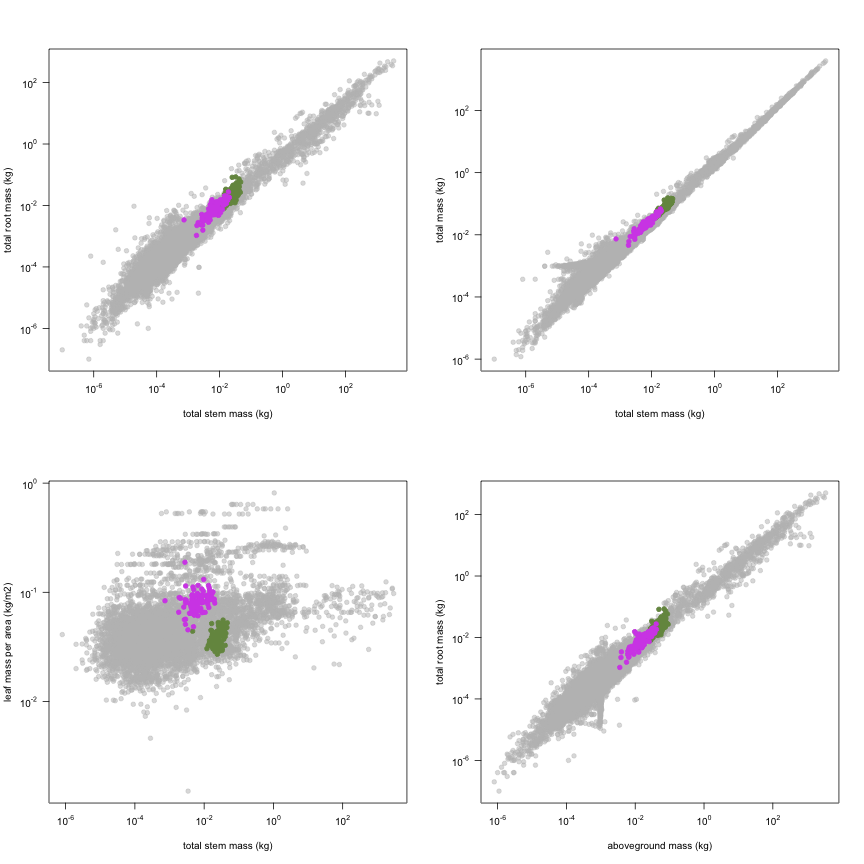-
Notifications
You must be signed in to change notification settings - Fork 19
Ghannoum2010a
Data contributor: David Tissue
Email: [email protected]
Address:
- Hawkesbury Insitute for the Environment, University of Western Sydney, Hawkesbury Campus, First Floor, Building L9, Locked Bag 1797, Penrith NSW 2751, Australia
Citation: Ghannoum O, Phillips NG, Conroy JP, Smith RA, Attard RD, Woodfield R, Logan BA, Lewis JD and Tissue DT (2010). 'Exposure to preindustrial, current and future atmospheric CO2 and temperature differentially affects growth and photosynthesis in Eucalyptus.' Global Change Biology, 16(1), pp. 303-319.
DOI: 10.1111/j.1365-2486.2009.02003.x
Abstract: To investigate if Eucalyptus species have responded to industrial-age climate change, and how they may respond to a future climate, we measured growth and physiology of fast- (E. saligna) and slow-growing (E. sideroxylon) seedlings exposed to preindustrial (290), current (400) or projected (650 yL/L) CO2 concentration ([CO2]) and to current or projected (current +4 degC) temperature. To evaluate maximum potential treatment responses, plants were grown with nonlimiting soil moisture. We found that: (1) E. sideroxylon responded more strongly to elevated [CO2] than to elevated temperature, while E. saligna responded similarly to elevated [CO2] and elevated temperature; (2) the transition from preindustrial to current [CO2] did not enhance eucalypt plant growth under ambient temperature, despite enhancing photosynthesis; (3) the transition from current to future [CO2] stimulated both photosynthesis and growth of eucalypts, independent of temperature; and (4) warming enhanced eucalypt growth, independent of future [CO2], despite not affecting photosynthesis. These results suggest large potential carbon sequestration by eucalypts in a future world, and highlight the need to evaluate how future water availability may affect such responses.
The dataset includes records for 215 individuals from 2 species belonging to 1 family(ies), presenting 1 functional type(s), growing in 1 condition(s) within 1 major type(s) of habitat, with data included for the following variables:
| Variable | Label | Units | N | Min | Median | Max |
|---|---|---|---|---|---|---|
| latitude | Latitude | deg | 215 | -34 | -34 | -34 |
| longitude | Longitude | deg | 215 | 151 | 151 | 151 |
| a.lf | Leaf area | m2 | 215 | 0.022 | 0.26 | 1.1 |
| a.stba | Stem area at base | m2 | 215 | 0.0000075 | 0.000055 | 0.00019 |
| h.t | Height | m | 215 | 0.29 | 1.1 | 1.7 |
| d.ba | Basal diameter | m | 215 | 0.0031 | 0.0083 | 0.016 |
| m.lf | Leaf mass | kg | 215 | 0.0017 | 0.016 | 0.045 |
| m.st | Total stem mass | kg | 215 | 0.00074 | 0.015 | 0.047 |
| m.so | Aboveground mass | kg | 215 | 0.0036 | 0.032 | 0.091 |
| m.rt | Total root mass | kg | 215 | 0.0011 | 0.014 | 0.085 |
| m.to | Total mass | kg | 215 | 0.0046 | 0.048 | 0.15 |
| ma.ilf | Leaf mass per area | kg m-2 | 215 | 0.027 | 0.052 | 0.19 |

And locally within the country:

The sites sampled are:
| Location | Longitude | Latitude | Vegetation |
|---|---|---|---|
| University of Western Sydney, Richmond, NSW, Australia | 150.75 | -33.61 |
The growing conditions of sampled plants was:
| Location | Grouping | growingCondition |
|---|---|---|
| University of Western Sydney, Richmond, NSW, Australia | CO2 = 280; Temp = Amb; Water = dry | glasshouse |
| University of Western Sydney, Richmond, NSW, Australia | CO2 = 400; Temp = Amb; Water = dry | glasshouse |
| University of Western Sydney, Richmond, NSW, Australia | CO2 = 640; Temp = Amb; Water = dry | glasshouse |
| University of Western Sydney, Richmond, NSW, Australia | CO2 = 280; Temp = Elv; Water = dry | glasshouse |
| University of Western Sydney, Richmond, NSW, Australia | CO2 = 400; Temp = Elv; Water = dry | glasshouse |
| University of Western Sydney, Richmond, NSW, Australia | CO2 = 640; Temp = Elv; Water = dry | glasshouse |
| University of Western Sydney, Richmond, NSW, Australia | CO2 = 280; Temp = Amb; Water = wet | glasshouse |
| University of Western Sydney, Richmond, NSW, Australia | CO2 = 400; Temp = Amb; Water = wet | glasshouse |
| University of Western Sydney, Richmond, NSW, Australia | CO2 = 640; Temp = Amb; Water = wet | glasshouse |
| University of Western Sydney, Richmond, NSW, Australia | CO2 = 280; Temp = Elv; Water = wet | glasshouse |
| University of Western Sydney, Richmond, NSW, Australia | CO2 = 400; Temp = Elv; Water = wet | glasshouse |
| University of Western Sydney, Richmond, NSW, Australia | CO2 = 640; Temp = Elv; Water = wet | glasshouse |
| Species | Family | Pft |
|---|---|---|
| Eucalyptus saligna | Myrtaceae | evergreen angiosperm |
| Eucalyptus sideroxylon | Myrtaceae | evergreen angiosperm |
Sampling strategy: Two eucalyptus species (Eucalyptus saligna and Eucalyptus sideroxylon) were grown at full field capacity under a treatment combination of ambient or elevated temperature (26/18 C or 30/22 C) and subambient, ambient or elevated CO2 (280, 400 or 640 ppm). Seedlings were grown for 150 days from planting, at which time they were subjected to a destructive harvest of all biomass.
Leaf area: All leaves were measured in a leaf area meter (LI-COR 3100, LI-COR, Inc., Lincoln, Nebr.).
Height: Height was measured as the vertical distance from the pot surface to the highest apex.
Biomass: All stems, leaves and roots were destructively harvested 150 days after planting, and dried seperately at 80degC for 48h.
Growth environment: Glasshouse.
Year collected: 2008-2009
This is how the study Ghannoum2010a fits in the entire dataset (grey). each colour represents a species. A legend of species names with colours is included at the end for reports with 1 < n < 20 species.
